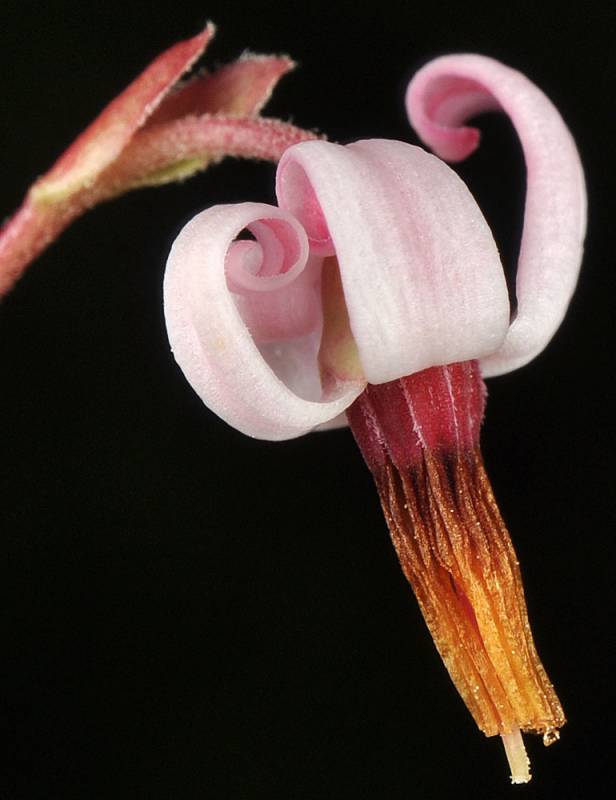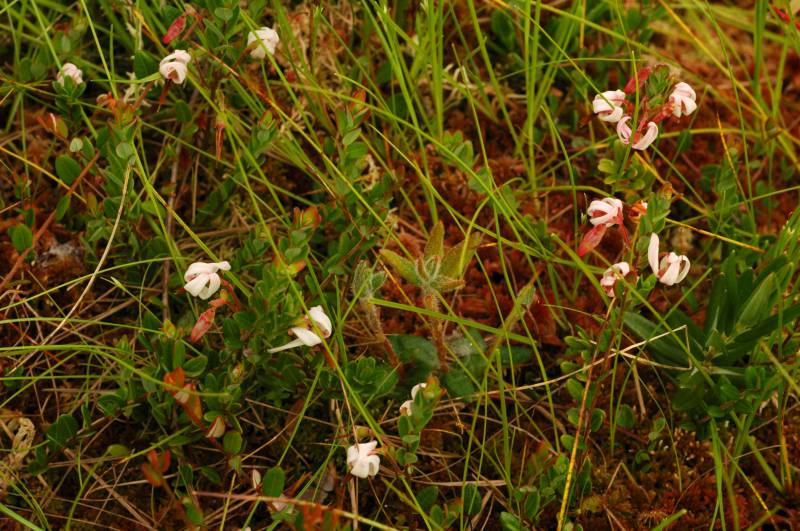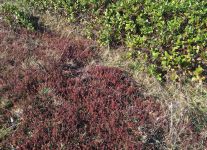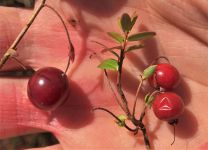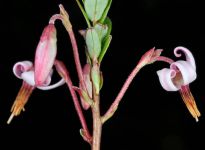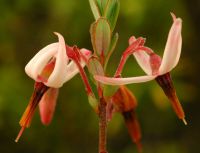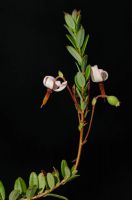Distribution: Occurring west of the Cascades crest in Washington; British Columbia to California, also in Idaho; native to eastern North America.
Flowers: May-July
Origin: Introduced from northeastern United States
Growth Duration: Perennial
Conservation Status: Not of concern
Pollination: Bumblebees, bees
Creeping evergreen shrub, often ascending, reaching 0.5-1.5 dm.
Leaves alternate, glaucous upper surface, green beneath, elliptic or narrowly elliptic, 5-15 mm long, margins entire and rolled slightly downward.
Inflorescences emerging from axils of bracts at base of shoots from current year’s growth; pedicles bracteolate, 2-3 cm, slender, nodding; bracteoles 2, 1-2 mm wide, resembling scales, greenish white; calyx lobes small; corolla white to pink, very deeply 4-lobed, segments 6-10 mm, strongly reflexed; filaments hairy, 1/3 length of anthers, anthers 1-2 mm.
Berries globose, smooth, reddish to pink, 10-15 mm.
Publication: Hort. Kew. 2: 13, plate 7. 1789.
PNW Herbaria: Specimen records of Vaccinium macrocarpon in the Consortium of Pacific Northwest Herbaria database.
WA Flora Checklist: Vaccinium macrocarpon checklist entry.
OregonFlora: Vaccinium macrocarpon information.
E-Flora BC: Vaccinium macrocarpon atlas page.
CalPhotos: Vaccinium macrocarpon photos.
USDA Plants: Vaccinium macrocarpon information.

